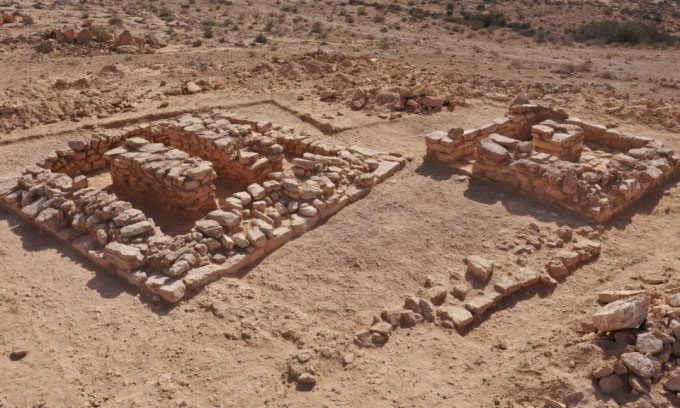Archaeologists have unearthed a burial site containing at least 50 skeletons dating back 2,500 years, likely belonging to women who were trafficked, in the Negev Desert.
The burial site consists of two large tombs located at an ancient crossroads that merchant caravans from various cultures used to traverse for trading goods and resources, according to a new study published in the journal of the Institute of Archaeology at Tel Aviv University. The team discovered the tombs in 2021 during a survey conducted prior to a water pipeline project, as reported by Live Science on July 6.

The burial site is at an ancient crossroads traversed by merchants thousands of years ago. (Photo: Emil Aladjem).
Unlike the round burial sites typically found in Negev, the two newly discovered tombs are square-shaped, one measuring 7 x 7 meters and the other 4.5 x 4.5 meters. Their location is also noteworthy.
“This type of tomb has never been discovered in the area, and they are not associated with any known settlement,” said Tali Erickson-Gini, an archaeologist at the Israel Antiquities Authority.
The tombs are situated at the intersection of two important ancient roads that ran east to west, from Egypt to Wadi Arabah (a region in the southern Negev near the Dead Sea), southern Jordan, and the Arabian Peninsula. The research team speculates that people may have been buried here because, in ancient times, crossroads were considered sacred places.
Some artifacts found in the tomb indicate that the skeletons belonged to adult women, although further analysis is needed for confirmation. For example, the tombs contained iron and bronze jewelry, pottery, and Cypraea shells from the Red Sea—objects believed to ward off evil spirits and bring good luck.
The research team suggests that the skeletons in the tomb may belong to trafficked women, although more evidence is needed to verify this. They might have been bought in Gaza or Egypt and intended for sale in Arabia as brides or sex workers for rituals. Numerous ancient records, including Minaean inscriptions from Yemen, have documented the trade of women in this region.
The positioning of some skeletons in the tomb suggests they may have been moved from their original locations to make space for additional burials. This indicates that the burial site was likely used over an extended period. Experts are currently preserving and restoring the site for further study, aiming to provide more information about trade networks thousands of years ago.


















































